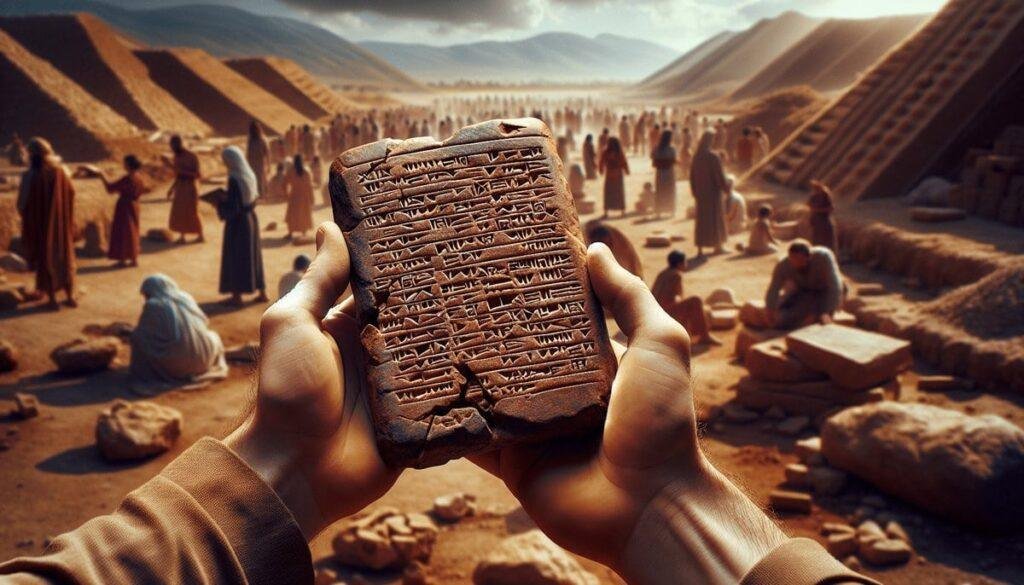Have you ever wondered about the wealth and influence of King Solomon, one of the most renowned figures from the biblical era? In recent times, discoveries at an ancient trading post have provided scholars with new insights into the opulence and trade networks that marked Solomon’s reign. This article, “Biblical Era Trading Post Unveils Solomon’s Wealth,” delves into archaeological finds that shed light on the king’s extensive trade networks and the riches they garnered. By examining artifacts and historical contexts, this discussion seeks to offer a clearer picture of the past.
Discovery Context
The mention of King Solomon’s wealth is not merely a biblical embellishment; it is supported by historical and geographical contexts that align with the biblical narratives. According to scriptures, Solomon’s era was characterized by prosperity and international trade. The trading post, located in what is now considered the southern region of Israel, is believed to have been a hub in the king’s extensive trade networks.
Biblical References
The Bible, particularly in the Books of Kings and Chronicles, paints a vivid picture of Solomon’s extensive alliances and trade networks. His dealings with the Queen of Sheba and the fetching of gold from Ophir illustrate a time when commerce thrived, bridging regions far beyond the lands of Israel. These references imply a network that was far-reaching and integrally tied to the king’s reported wealth.
Historical Background
Solomon’s era, dated around the 10th century BCE, was a time of burgeoning empires and civilizations across the Near East. The strategic geographical situation of Israel enabled it to become a key player in regional trade. This is supported by records from neighboring civilizations such as Egypt and Mesopotamia, which frequently interacted with Israel through trade and political alliances.
Geographic Location
The site in question, located close to the ancient copper mines in Timna Valley, provides a glimpse into the industrial activity that possibly fueled Solomon’s wealth. Given its proximity to key trade routes that connected Africa, Asia, and Europe, it is likely that this trading post served as a significant juncture for goods, ideas, and culture during the biblical era.
Recent Findings
Modern archaeological excavations have unearthed several artifacts, including pottery, jewelry, and remnants of textiles, suggesting a bustling trade environment. These discoveries have fortified the notion of an economically vibrant and culturally diverse settlement during Solomon’s reign, reflecting the biblical accounts.
Archaeological Evidence
The artifacts unearthed at this site serve as tangible connections to the long-forgotten world of ancient trade networks. The evidence gathered supports the historical accounts of grandiosity and economic stature ascribed to Solomon’s reign.
Specific Artifacts
Among the recovered items, a collection of intricately designed pottery provides clues about the trade relationships of the period. These ceramics, with their unique craftsmanship, hint at influences from distant cultures, suggesting that the region was part of a larger intercontinental trade network. Similarly, chunks of smelted copper underscore the area’s economic activities, with the metal being a vital commodity for both local use and export.
Dating Methods
To arrive at an accurate chronology of the site, archaeologists employ various dating methods such as radiocarbon dating and thermoluminescence. These techniques have placed many of the findings squarely in the time frame traditionally associated with Solomon’s reign, further anchoring the biblical accounts in archaeologically verifiable history.
Physical Descriptions
The physical characteristics of the site—its layout and the structure of artifacts—provide insights into the social and economic structures of the era. Multi-roomed buildings with centralized courtyards reveal organizational aspects of trade activities. Additionally, the presence of raw material processing areas denotes a site keen on production and exchange.
Expert Interpretations
Experts, like Dr. Pnina Shor from the Israel Antiquities Authority, posit that the sheer diversity of artifacts at the trading post is indicative of extensive diplomatic and commercial interactions with surrounding regions. Dr. Shor notes, “These findings are pivotal in understanding the economic strategies employed during Solomon’s era, reflective of both affluence and political savvy.”
Significance
The implications of these findings stretch beyond mere historical curiosity; they add depth to our understanding of biblical narratives and the socio-economic realities of ancient Israel.
Biblical Implications
These archaeological discoveries enhance the credibility of biblical descriptions concerning Solomon’s wisdom and wealth. They help scholars bridge the gap between myth and historical fact, providing more grounded interpretations of scripture.
Historical Impact
The trading post showcases how Israel, under Solomon, may have benefited from the position at the crossroads of major civilizations, facilitating a bustling economy that contributed to its fabled prosperity. This, in effect, reframes understanding of regional power dynamics during the era and highlights the influence wielded through diplomatic trade.
Modern Understanding
By examining such posts, historians and archaeologists gain a clearer picture of the interconnectedness of ancient societies. Modern excavations continue to yield data that transform our understanding of past civilizations and their legacies.
Research Status
While these findings propel our knowledge, ongoing research is crucial. Future digs and more sophisticated technology will likely unearth further evidence, potentially revealing more about the socio-political landscape during Solomon’s reign.
Conclusion
In summary, the discoveries at this ancient trading post divulge a tapestry of wealth and influence that aligns with biblical accounts of King Solomon’s era. These artifacts offer invaluable insights into the economic and cultural exchanges that defined ancient trade networks. As further research unfolds, there is potential for more revelations that might change our historical narratives about this intriguing period.
Scholars and enthusiasts alike are encouraged to keep abreast of these findings as they provide a fascinating window into the world that once was. The ongoing excavations and study ensure that the mysteries of ancient kingdoms continue to be brought to light, expanding our comprehension of history’s vast and intricate web.





